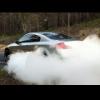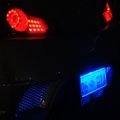Turbo Blown, What Are My Options
Announcements
-
Similar Content
-
Latest Posts
-
By joshuaho96 · Posted
I think this is just a product of how the US market works for this stuff. Shops are expensive and there's no real way of knowing what kind of results you're going to get, people don't really have the institutional knowledge. I have heard too much at this point to really put faith in anybody "full service" except maybe DSport and they aren't really a full service kind of shop. If you go to the right place I have no doubt they'll get it right for you. Some locals have set it up right but the cost really is nuts and even now they're still fighting issues. And you know I'm a crazy person who thinks things like twin scroll, relatively short low-mount cast headers, PCV recirc to intake, recirculating BOV, right-sized for ~400 whp, MAF load, validating all of that to a standard comparable to OEM test programs, etc are relevant. For what it's worth, multiple local owners at this point have been stuck in a perpetual cycle of blowing a motor -> getting someone to rebuild it -> some missed detail causes the bearings to wipe and spin just outside of break-in mileage or drop valves or some other catastrophe -> cycle repeats. I usually only find out about this because I'm perpetually helping random friends with diagnosing car troubles, Skyline or otherwise. The single turbo stuff if I'm honest is mostly secondary, it just doesn't seem to achieve the numbers in the ~2000-3000 rpm region that I would expect given the results I've seen here or in Motive's videos. I don't really know what we're missing here in the US to be causing this. Lots of people like to emphasize the necessity of finishing the project first and foremost, but I'm not made of money and I can't afford to be trashing a 15k+ USD engine build with any regularity. Or spending my relatively limited garage time these days unable to triangulate problems because too much was changed all at once. Also, even if it isn't a catastrophic failure I would consider spending the cost of single turbo conversion with nothing to show for it to be pretty bad. -
The water pump is know to leak as well. So if the coolant is low checking that first as well as hoses.
-
By Murray_Calavera · Posted
Reading your posts Josh, sometimes I feel like I've gone in a time machine back to the 90's when everyone was doe-eyed and figuring things out for the first time. I've lost track of how many single turbo GTR's I've seen on track that haven't burnt down lol. Everything has been figured out a long time ago. These things are at the point now where its essentially turn-key to go single turbo. -
By joshuaho96 · Posted
Among other things yes. Making sure to either use an oil pressure regulator or the right restrictor size for your oil pump/range of oil viscosities you intend to run, making sure you plumb the lines correctly, turbo should be placed such that it siphons properly even when the water pump isn't turning so you don't boil coolant in the turbo after shutdown, oil return should be low resistance and also preferably picking the one that is most likely to return to the pickup as opposed to some other irrelevant part of the pan. It's far from impossible to figure this out but I have seen people really, really struggle and if that's the case it's easier to just take the path of least resistance. To me, bolt-on twin turbos are a fixed cost whereas single turbo is almost unbounded. -
By Looney_Head · Posted
Latest round of updates on the car. I purchased and installed a SWS clutch slipper to help with 60ft times and got some second-hand good condition 275/40R17 Hoosier DR2 radials. Test and tune in November showed the tyres were an upgrade over my over 15 year old mickey Thompson's and I got a 1.8 second 60ft and pb et of 11.71 but even then, that run wasn't great due to rain and driver error (the event got called off 10 minutes later fast forward to the weekend just gone 25th of Jan and there was finally a break in the weather to let racing happen. The first run the track was slippery and only managed a 12.1@129 Second run the track was better and got a new pb et and mph: 11.54@131 Lith and I then worked out that I installed the previously mentioned clutch slipper incorrectly and its never been working, and I had just been dumping the clutch the entire time, we also noticed it was on street boost and not race boost. So I lined up for a third run with the car turned up in the first two gears, but the passengers side axle objected to clutch dumps and left the chat which stopped my weekend. so there will be another attempt in the future once I replace the tyres as they rubbed and are stuffed now. but a low 11 should be on the cards.
-




Recommended Posts
Create an account or sign in to comment
You need to be a member in order to leave a comment
Create an account
Sign up for a new account in our community. It's easy!
Register a new accountSign in
Already have an account? Sign in here.
Sign In Now